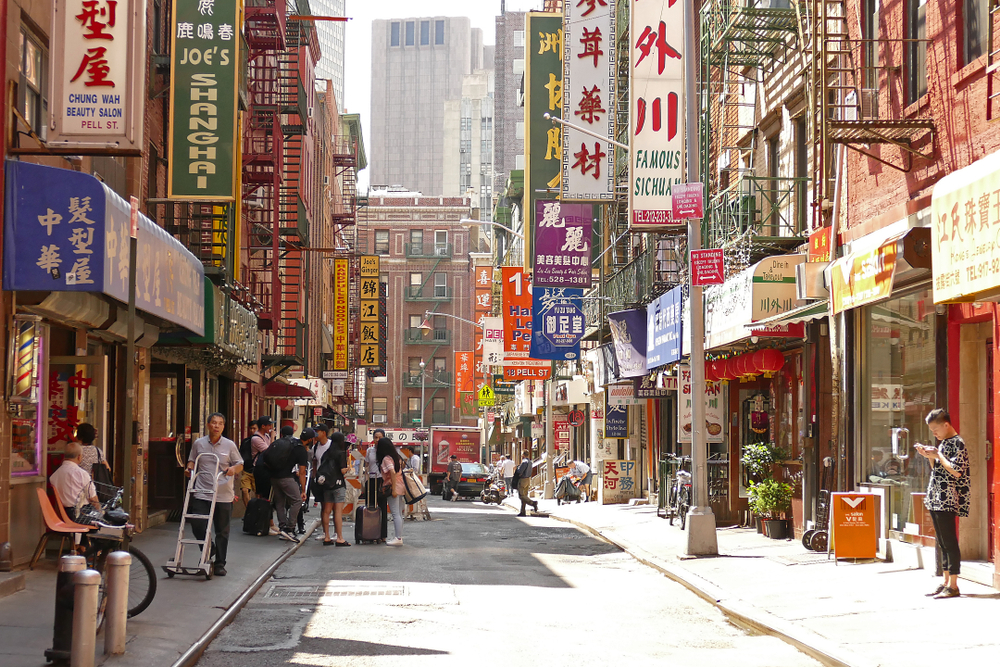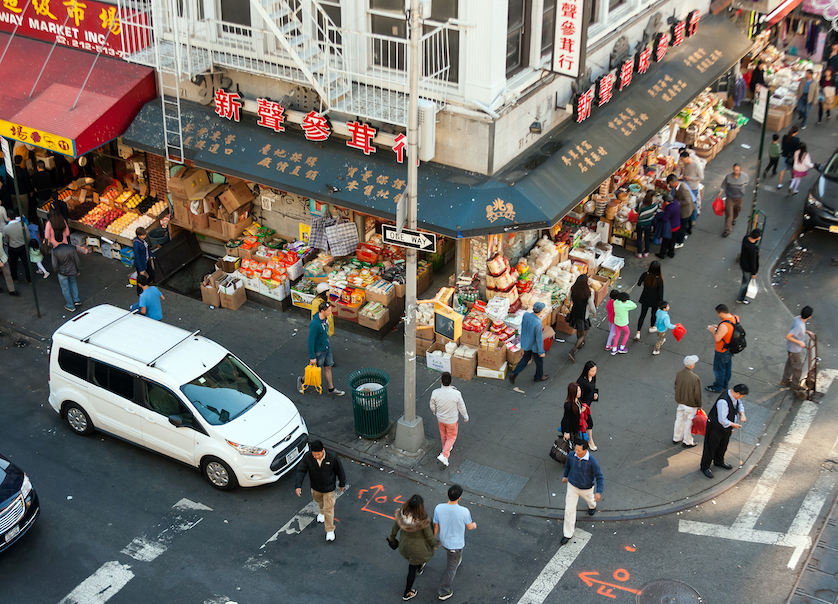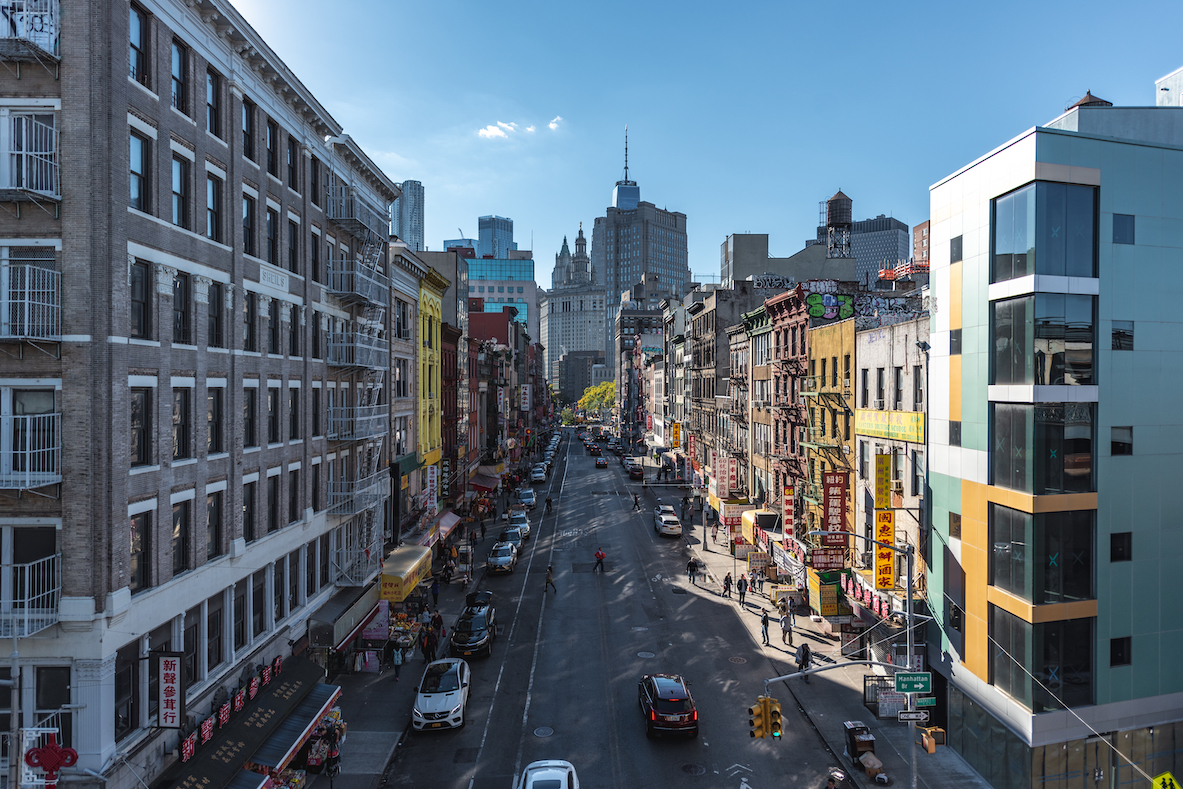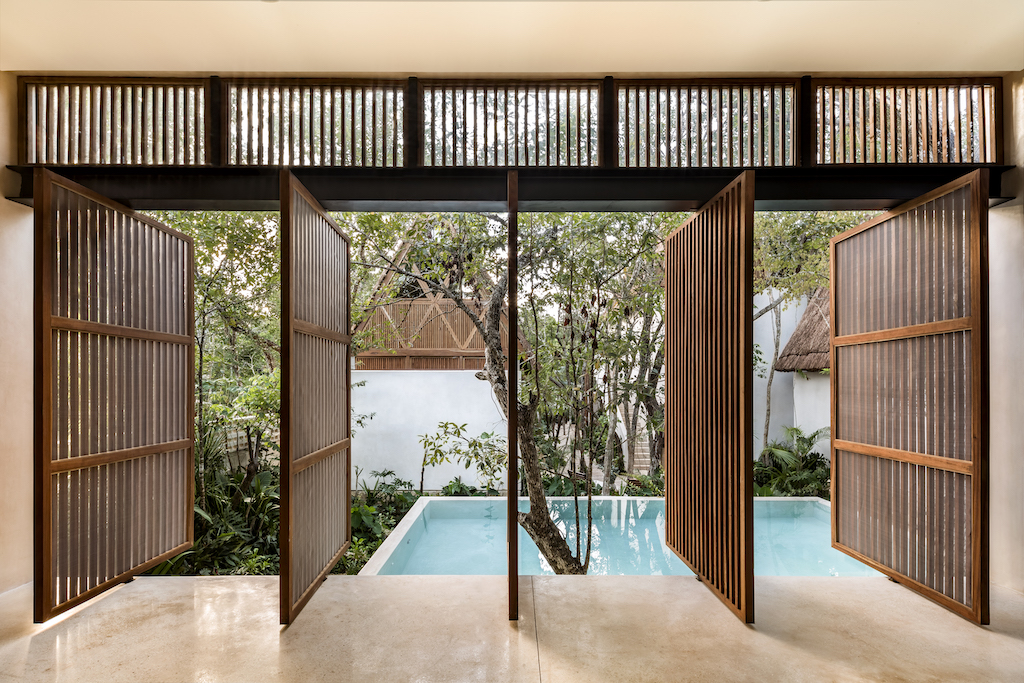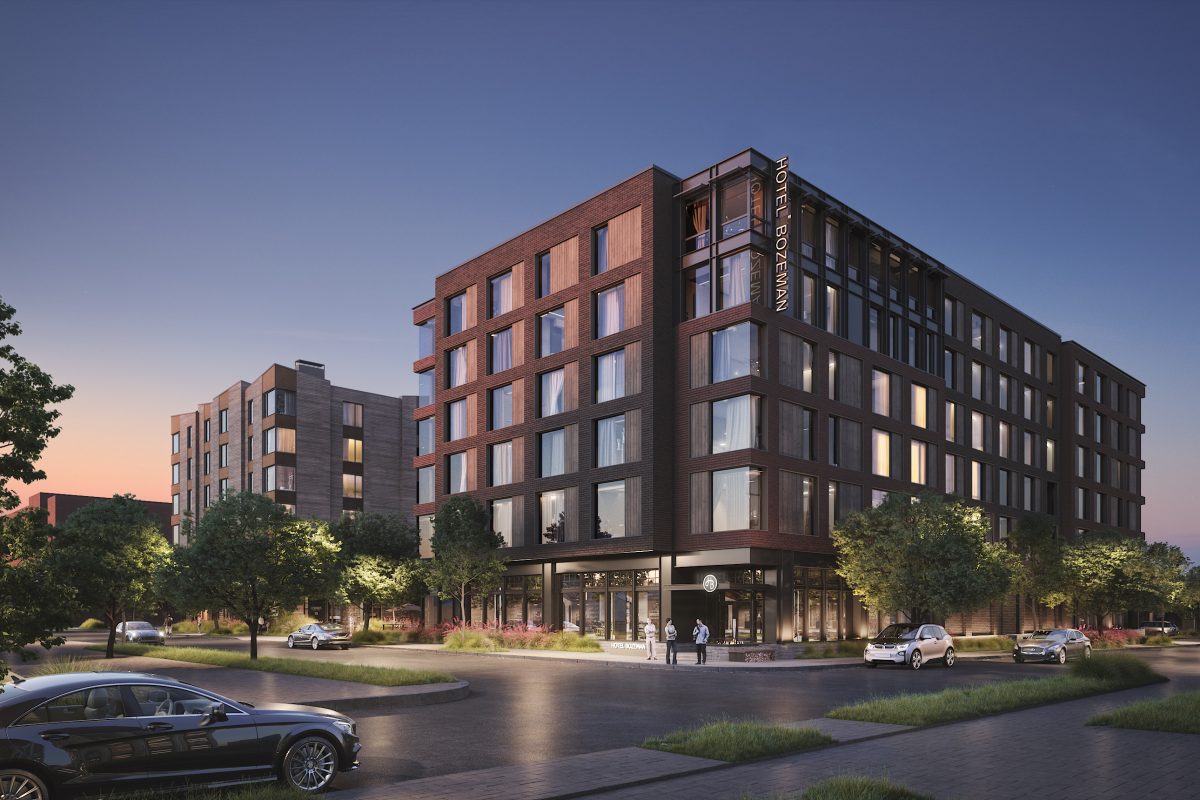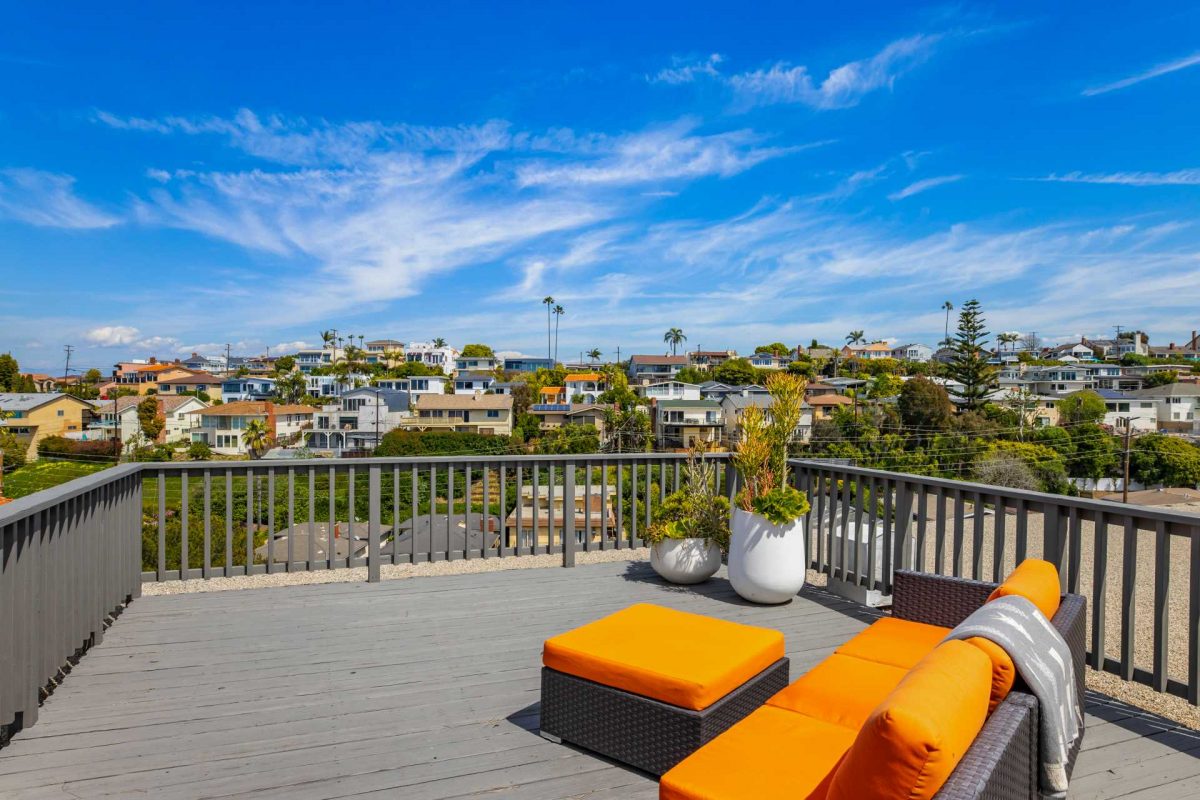MANHATTAN
Chinatown & Two Bridges Neighborhood Guide
On Chinatown’s busy streets, vibrant corridors of market stalls alternate with quaint and quiet alleyways. Just west of the Lower East Side, south of Little Italy, and east of Tribeca, the heart of Chinese cultural life in New York City is nestled right in the core of cosmopolitan downtown. Manhattan’s Chinatown is one of the country’s oldest Chinatowns, and you will hear a variety of dialects from Cantonese to Mandarin on its streets, mixed in with English, Italian, and other languages. The neighborhood has been a welcoming home to immigrants from all over the world, including Irish, Jewish, and Italian people, but it has drawn the largest population of Chinese immigrants, who created a thriving, bustling, and singular community.
Once largely composed of dry goods and grocery stores, merchant associations, and small restaurants, Chinatown has evolved into a vivacious neighborhood rife with all manner of shopping options, multiple museums, and a mix of family-run restaurants, expansive multi-story dim sum palaces, up-and-coming culinary experiments, and cute bubble tea, matcha, and artisanal coffee cafes, not to mention a thriving nightlife scene. Adjacent to the neighborhood is Two Bridges, an area that is home to a mix of affordable housing and luxury towers, thus fostering a diverse community that has also seen a recent influx of fashionable restaurants, boutiques, and art spaces. The area’s nine-block historic district has a significant landmark around every corner, from some of the oldest churches in all of New York City to one of its oldest cemeteries. Families have lived in this neighborhood for generations, but the area’s immigrant heritage means it is welcoming to newcomers as well, fostering the diverse yet communal energy unique to the warm Chinatown neighborhood.
Chinatown & Two Bridges Real Estate Stats
MEDIAN SALE PRICE
$1,425,000
MEDIAN RENTAL PRICE
$4,000
An Abbreviated History of Chinatown and Two Bridges
The story of Chinatown in Manhattan begins with a Cantonese entrepreneur named Ah Ken, who is believed to be the first Chinese person to permanently make a home in what is now Chinatown around 1850. On Doyers, Pell, and Mott streets, a tight-knit Chinese community emerged in what was then a slum called Five Points. Doyers Street’s signature curves follow the path of the stream it was built over when Dutch settlers first came to the area a century earlier. In the second half of the nineteenth century, Chinese laborers working in the West during the gold rush moved East, many to New York’s burgeoning Chinatown. The 1882 Chinese Exclusion Act prohibited Chinese people from becoming full US citizens, enshrining racist attitudes already present in the US in law. In the wake of the Act’s passage, Chinatowns in various US cities cropped up, as Chinese people formed communities, support networks, and thriving businesses and cultural institutions even while their adopted country rejected them. In Manhattan, Chinatown grew from the sliver that began back on Mott Street, to eventually encompass Grand and Broome Streets as well as land north of Canal Street. The long-overdue repeal of the Chinese Exclusion Act in 1964 led to even more growth, as waves of new immigrants from Hong Kong, Guangdong, and Taiwan came to New York’s booming Chinatown.
Two Bridges has long attracted immigrant communities, including Greek, Irish, and Italian people in addition to Chinese immigrants. Nine blocks of the neighborhood are designated as a historic district and are home to an abundance of landmarks including a Jewish cemetery, multiple significant churches, and architecturally significant homes. The federal government subsidized its first middle-income affordable housing development in this neighborhood. The 2010s saw the construction of multiple modern luxury towers, and in turn, the neighborhood drew an influx of cafes and hip concept restaurants. Today, Chinatown and Two Bridges maintain their storied historical ambiances, immigrant communities, and diverse array of Asian businesses, cultural institutions, and cuisines while also welcoming diverse young residents.
NEIGHBORHOOD BOUNDARIES
- Broadway to the West
- Worth and Henry Street to the South
- Essex Street to the East
- Hester and Grand Street to the North
| Lafayette Canal Street Station | 6 |
| Center Street Canal Street Station | J Z |
| Broadway Canal Street Station |
N Q R W |
| Grand Street Station | B D |
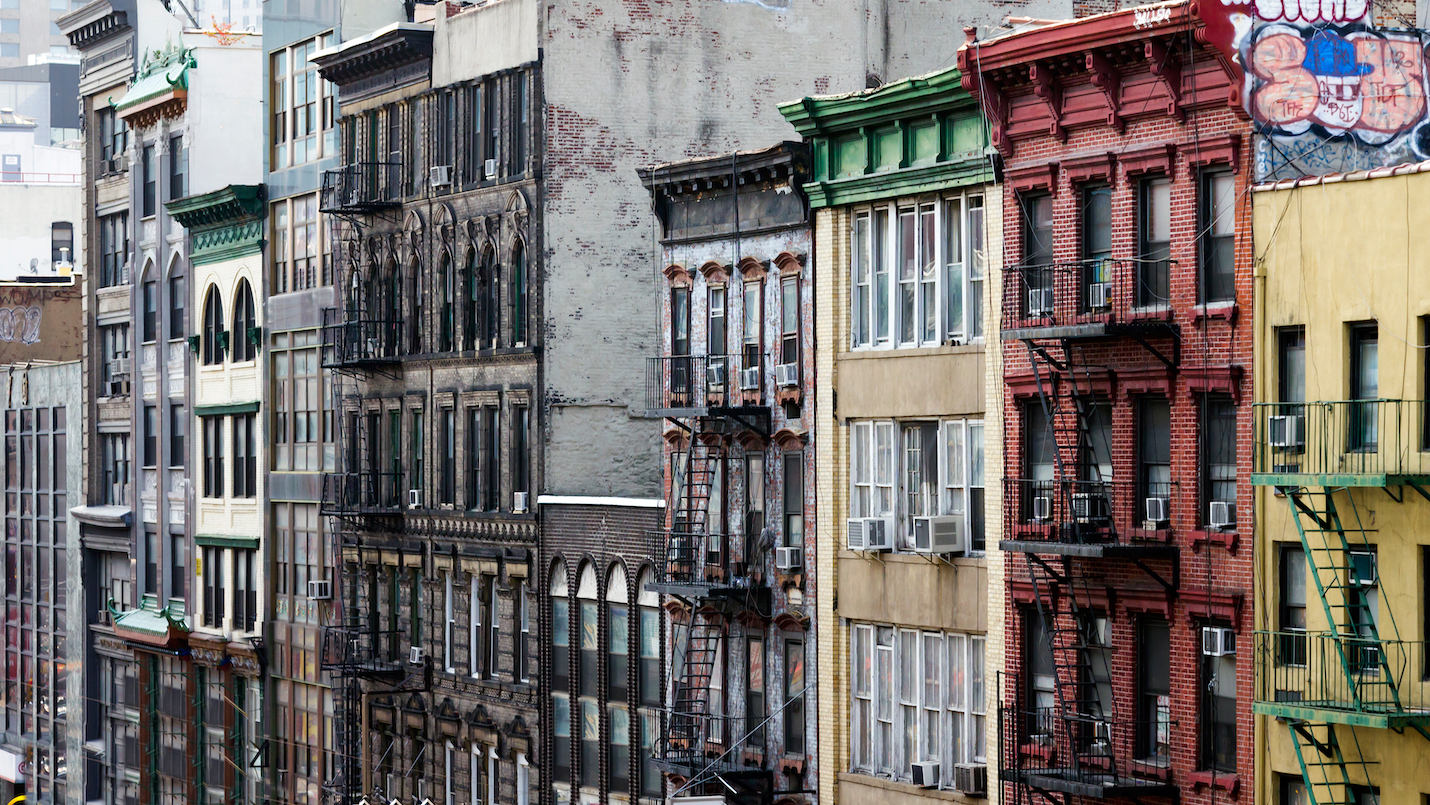
Residents Love This Neighborhood Because
- Vibrant, bustling markets offering a fresh and extremely diverse range of produce, meat, and seafood
- Delicious restaurants serve everything from traditional Dim Sum and hand-pulled noodles to modern Basque cuisine
- Local investment in the community –– many restaurants and businesses are passed down through generations
- Hidden speakeasies and mixology-forward bars offer lively nightlife options
- Shopping for everything from jewelry to streetwear on Canal Street
- An amazing diversity of languages spoken
- Strolling distance to all downtown neighborhoods
- Subway hub –– 9 train lines stop in the neighborhood
- Multiple museums and monuments reflect the neighborhood’s long history of Chinese resilience and community-building
What to expect
| Cafés |
+11 |
| Hospitals |
1 |
| Community Gardens |
1 |
| Dog Runs |
0 |
| Libraries |
1 |
| Parks |
5 |
| Playgrounds |
5 |
| Restaurants |
+25 |
| Yoga Studios |
3 |

Chinatown & Two Bridges Landmarks and Cultural Institutions
A NEIGHBORHOOD TOUR
Museum of Chinese in America
At its founding in 1980, the Museum of Chinese in America (MOCA) endeavored to collect, preserve, and exhibit art, cultural ephemera, and other historical markers of the Chinese presence in the United States. Until 2009, the museum did all this from only four rooms on the second floor of a building on Mulberry Street. That year, MOCA moved into a full building on Centre street, where it was able to expand its collections, stage bigger exhibits, and produce community events. MOCA holds the largest research collection of Chinese American artifacts in the United States. Today, the museum has grown from a small community-based organization into a historical institution of national standing, while still retaining its close ties to Manhattan’s Chinatown residents.
Artists Space
Since 1972, Artists Space has been a bulwark of the radical arts landscape in downtown Manhattan. Founded by an arts administrator and a critic as a New York State Council of the Arts Project, the gallery devoted itself from its inception to alternative and emerging artists, often jumpstarting careers. Artists Space is committed to presenting art that engages with controversial, contemporary issues from identity politics to the AIDS crisis. Artists like Cindy Sherman, Jeff Koons, Andrea Fraser, Barbara Kruger, and Jenny Holzer exhibited at Artists Space early in their careers, before going on to become luminaries in their fields.
Doyers Street
Named for Hendrik Doyers, the 18th-century Dutchman who opened a distillery and tavern on the street in the 1790s, Doyers Street is famous for its unique curving road, which follows the path of the stream that once ran through it. The street is lined with long-running barber shops, beauty salons, and gift shops as well as restaurants and bars that have been mainstays of the neighborhood for years. Situated at one of the street’s curves, Nom Wah Tea Parlor has been serving dim sum in Chinatown since 1920, making it the oldest continuously running restaurant in the neighborhood. The street is often closed to cars for lengthy periods and the asphalt-covered with brightly painted commemorative murals.
Columbus Park
Columbus Park has gone through many evolutions since its construction in 1897 and had many names, including Mulberry Bend Park and Paradise Park. In 1911, the leafy haven was renamed for Christopher Columbus to honor the Italian immigrant community in the area. The space has long been a vibrant social spot for the Chinese community, where people play mahjong, practice tai chi, and perform traditional Chinese music and dance. The Northern plaza of the park features a statue of Dr. Sun Yat-Sen, a former President of the Republic of China and a prominent political philosopher.
Mahayana Temple Buddhist Association
The Mahayana Temple on Canal Street is the oldest Chinese Buddhist Temple on the eastern seaboard. Founded in 1962, the temple was originally housed in a 40-square-foot space in the back of the store its founder ran. It rapidly attracted a large congregation of Chinese Buddhists and became a social hub as well as a place to practice religious devotion. Soon, the temple moved to Mott Street, and eventually to the space on Canal it remains in today. The Mahayana Temple Buddhist Association offers lectures to people who do not practice Chinese Buddhism but want to learn about the religion’s history, as well as meditation classes. The space is an architectural gem that houses a massive gold sculpture of the Buddha.
First Cemetery of Congregation Shearith Israel
This cemetery, which is also known as Chatham Square Cemetery, is the oldest Jewish graveyard in Manhattan and is maintained by Congregation Shearith Israel, which is the oldest Jewish congregation in all of North America. The congregation began with a group of Spanish and Portuguese Sephardic Jewish immigrants to New York, who founded the congregation in 1654 and built the cemetery soon after. Today, only around one hundred tombs and headstones are visible aboveground, including those of Dr. Walter Jonas Judah, the second Jew to graduate from an American medical school, and Rabbi Gershom Sexas, the first Jewish spiritual leader born in the US.
Mariners Temple
This Greek Revival structure on the corner of Oliver and Henry Streets was built in 1845 to replace an earlier, less grand church. Both buildings were funded by Henry Rutgers, a Revolutionary War colonel who became a politician. Revered Swedish Baptist leader Anders Wineberg was ordained in the Temple in 1852. The brownstone church features tall ionic columns and is Manhattan’s oldest Baptist Church. The church’s name, Mariners Temple, comes from the European sailors who worshiped there when their ships were docked in the East River.
Museum at Eldridge Street
This museum is housed in a historic landmark synagogue built in 1887, a temple that served the then-rapidly growing New York Jewish community. The Eldridge Street synagogue was the first purpose-built Eastern European Jewish synagogue, and it became a stronghold of community for Jewish immigrants from Russia, Poland, Lithuania, and elsewhere in Eastern Europe. The museum opened inside the synagogue in 2007, devoted to educating the public about the history of Jewish immigration to the United States, and Jewish-American culture, especially in New York City.
Deluxe Food Market
This vast grocery store spans an entire city block and offers almost every Chinese food staple you can imagine, alongside a wide variety of niche items. Whether you are looking for lacquered roast ducks, chinese custards, pork buns, baked goods, or prepared foods by the pound, this market has whatever you are in the mood to taste. The business has been in the same family since it opened more than two decades ago, and its extensive variety draws tourists and local shoppers alike.
Canal Street
Canal Street is named for the canal that once ran where Chinatown’s central commercial thoroughfare now stands. The canal was originally dug to drain polluted city water into the Hudson River but was paved over as the city expanded into a major metropolitan hub over the course of the nineteenth century. This street is a shopping hotspot for residents from all over the city as well as tourists, looking for anything from a sweet snack to the perfect souvenir. You’ll see historical buildings like the famously pagoda-topped On Leong Chinese Merchants Association and Canal Arcade, a secret passageway lined with restaurants, sandwiched between a myriad of clothing and jewelry storefronts.
Architecture In Chinatown and Two Bridges
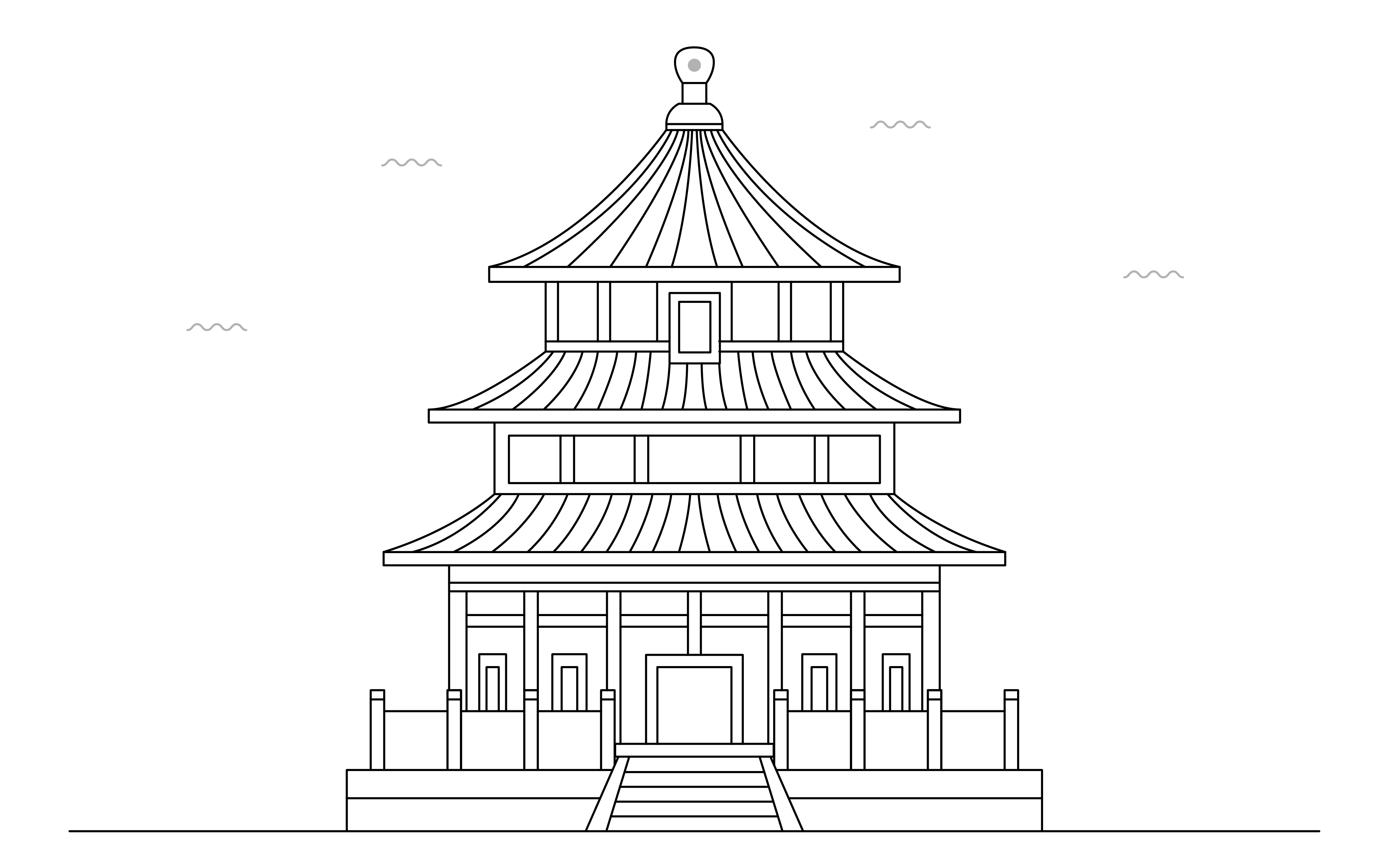
Chinese Deco
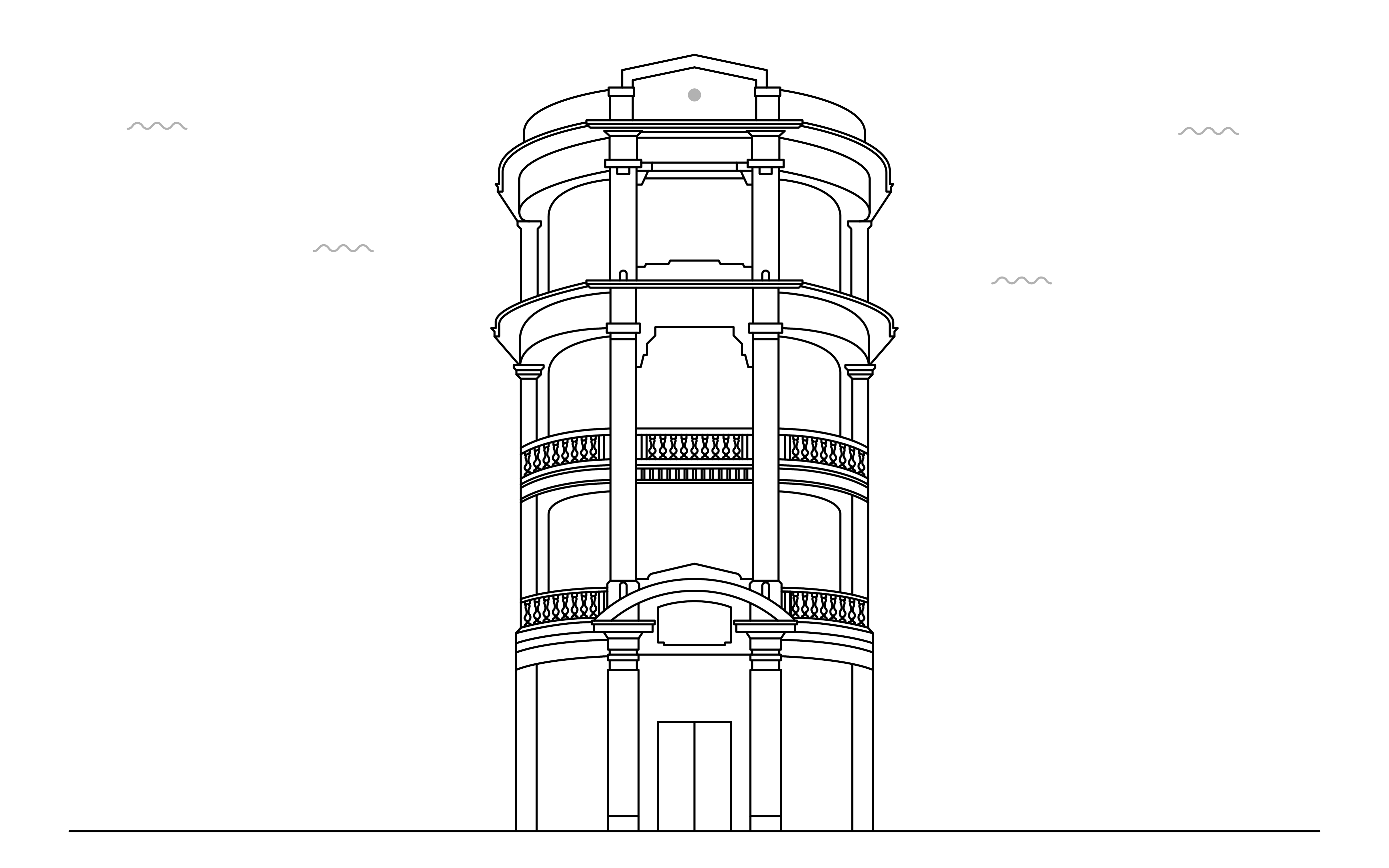
Tong Lau
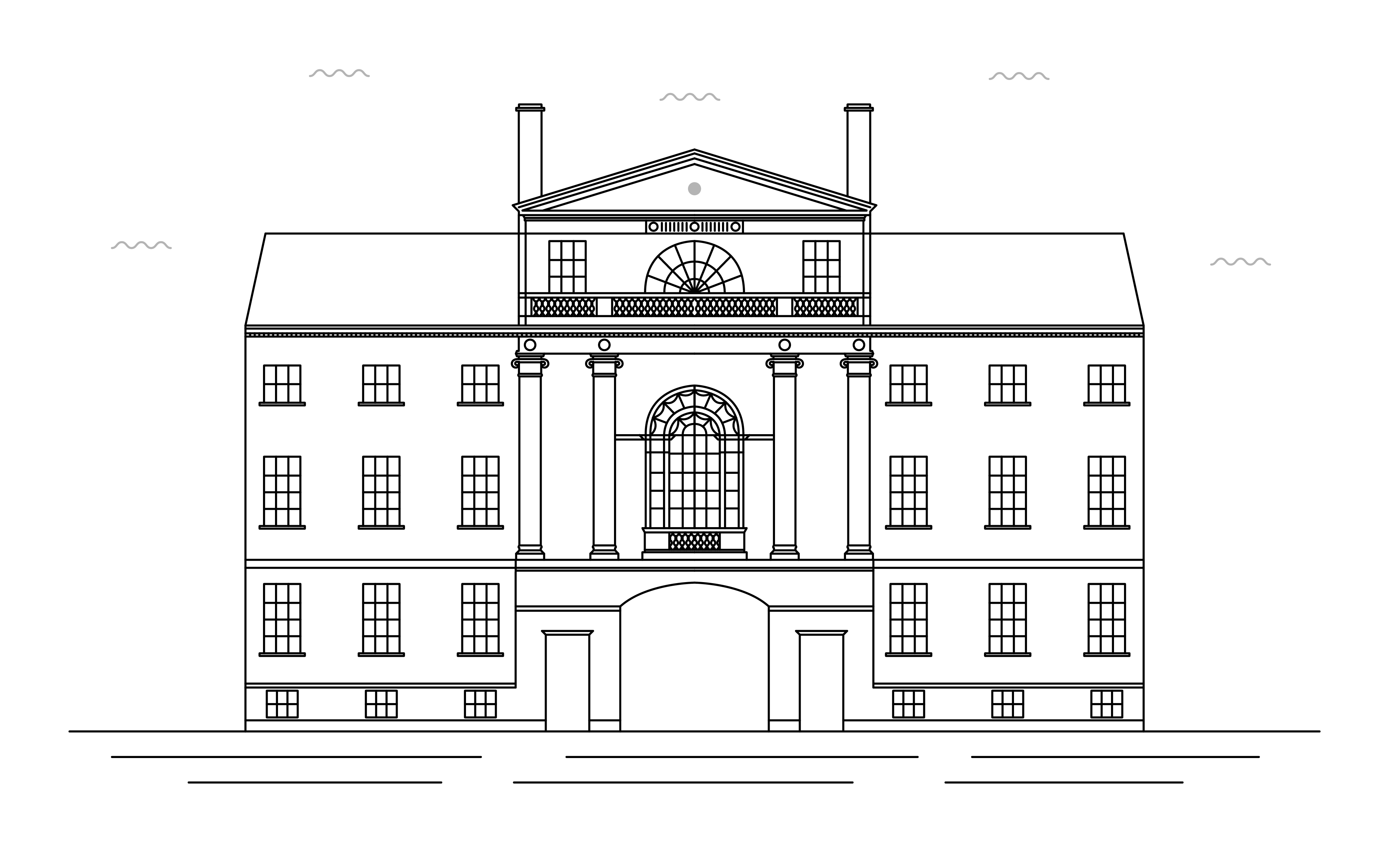
Late-Federal
Notable New Yorkers
Who Have Lived in Chinatown and Two Bridges

NORMAN REEDUS
Actor
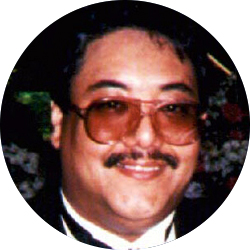
CHINO RODRIGUEZ
Musician
Popular Food & Drink
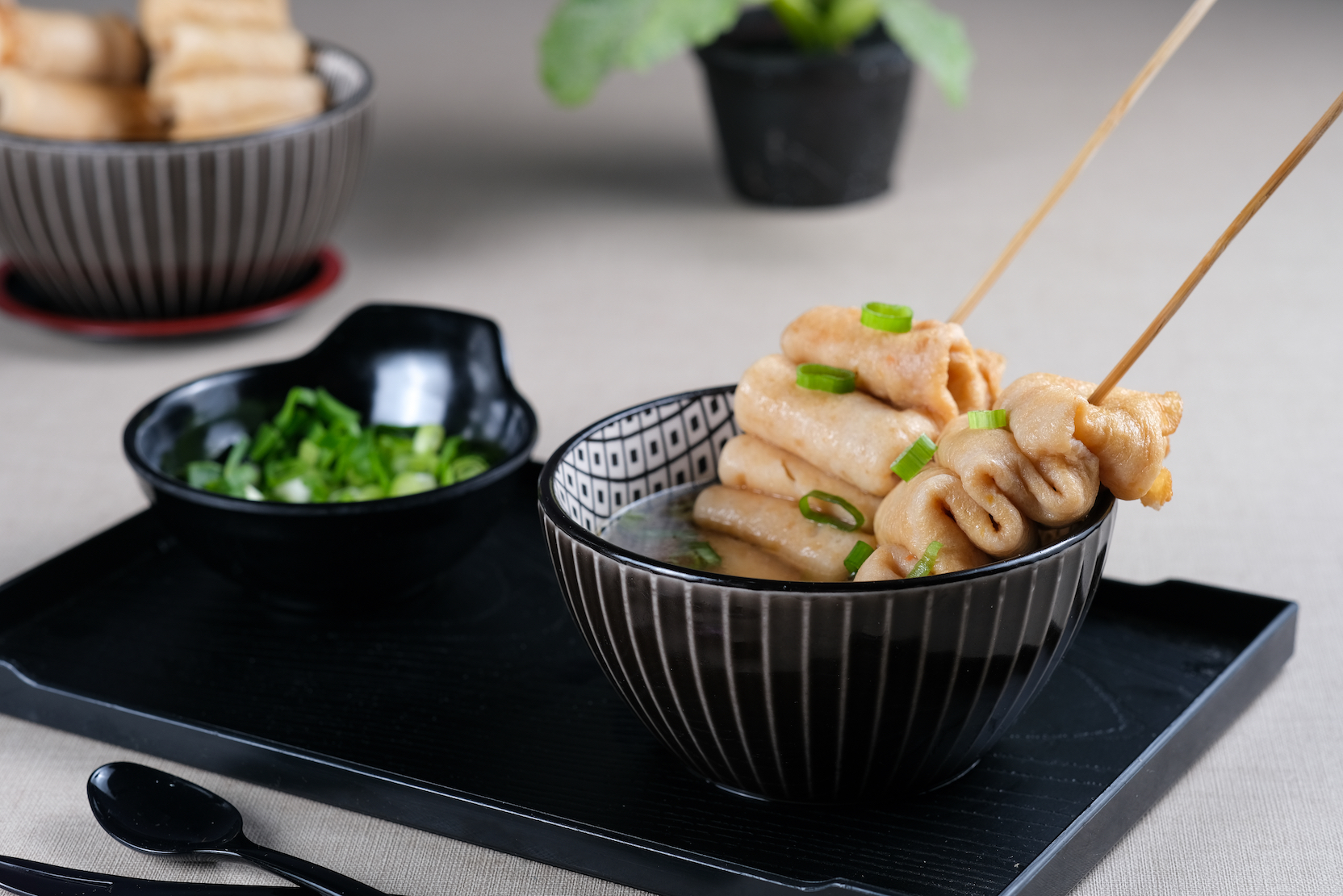
JOE'S SHANGHAI
46 Bowery Street
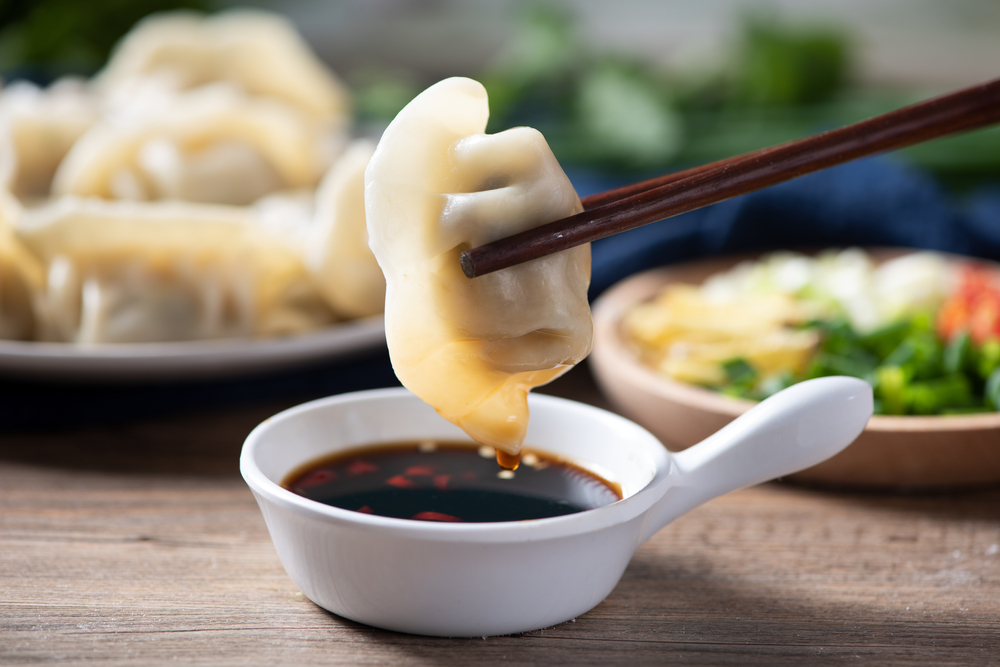
NOM WAH TEA PARLOR
13 Doyers Street
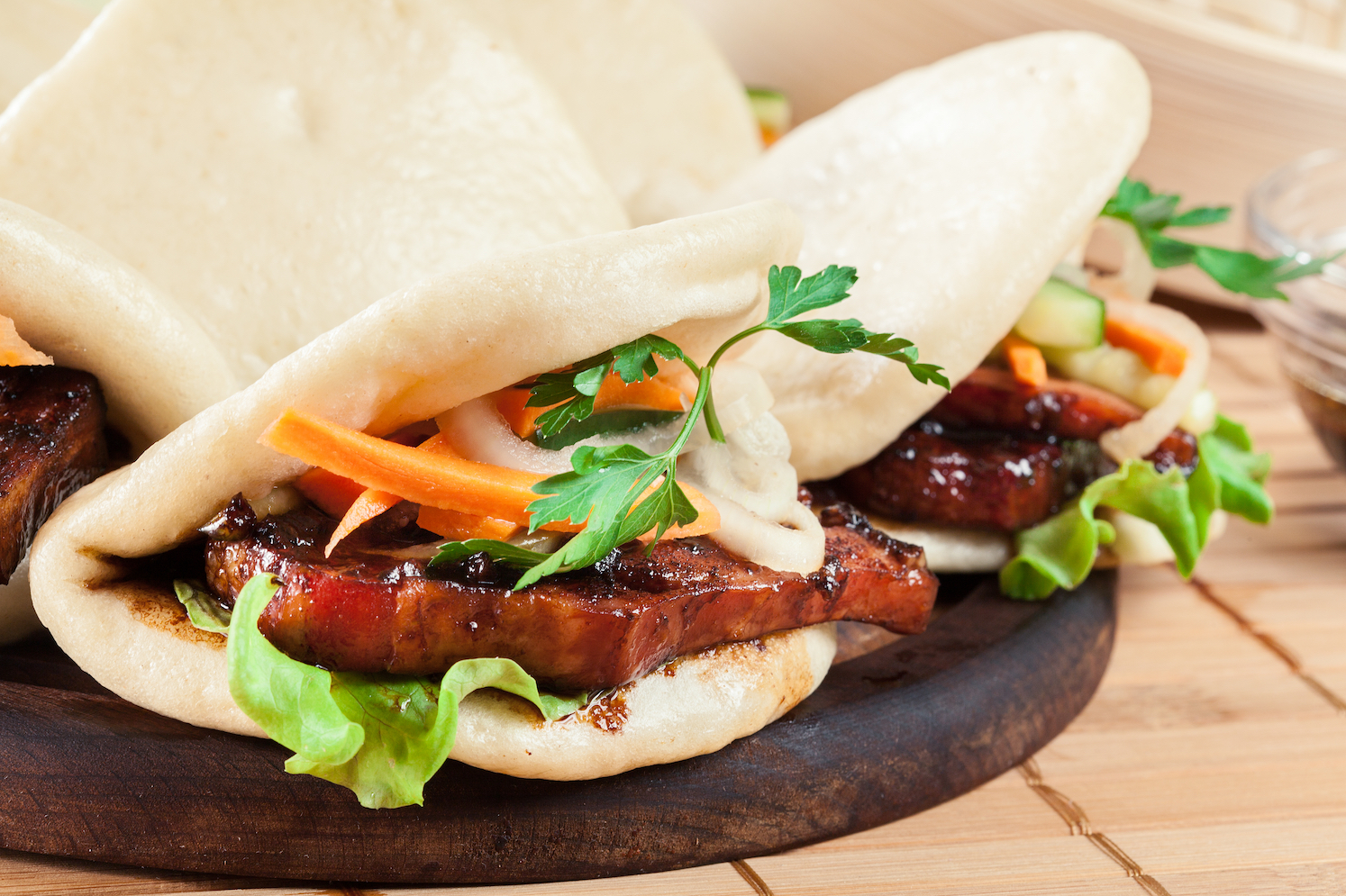
WU'S WONTON KING
165 East Broadway
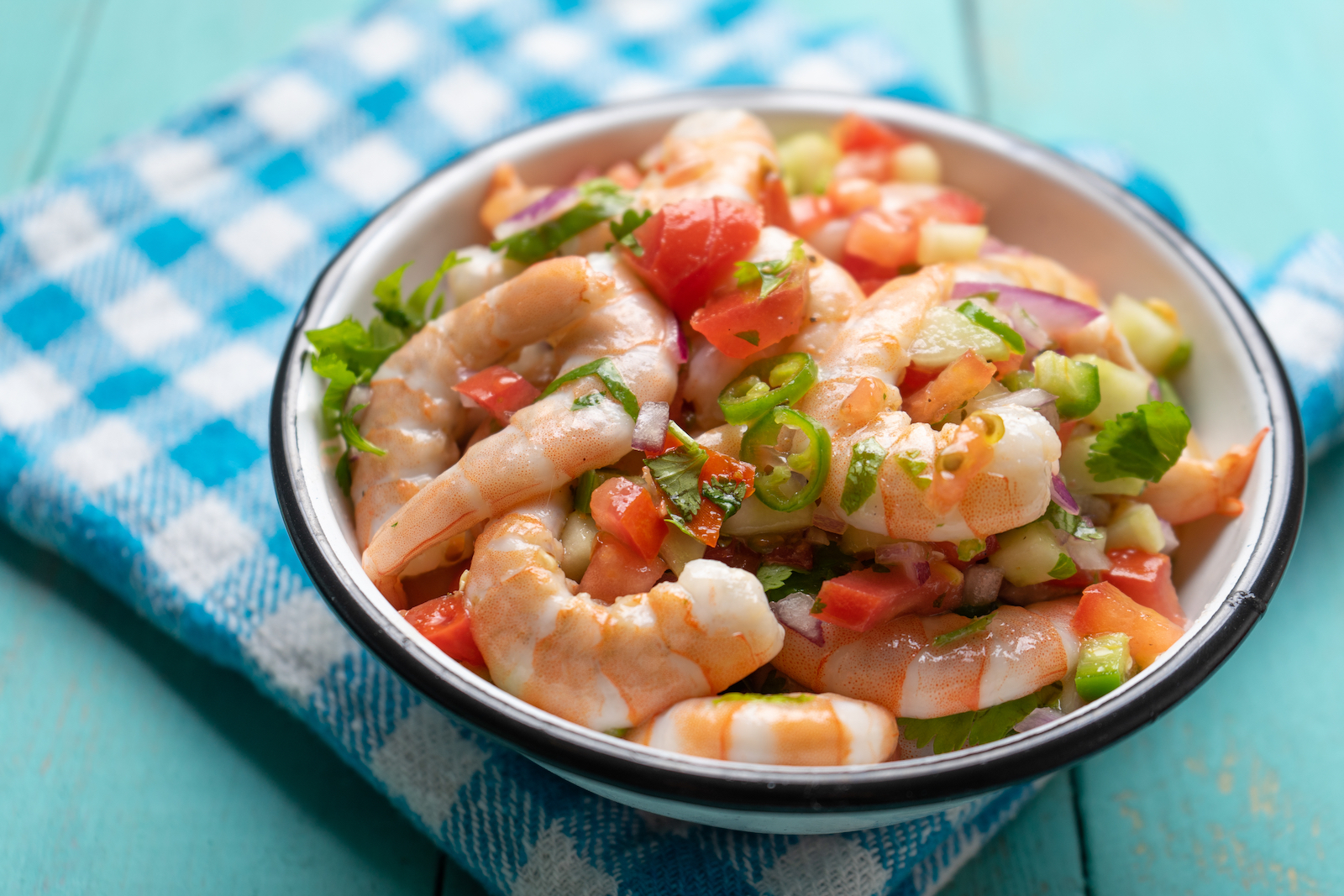
ERNESTO'S
259 East Broadway
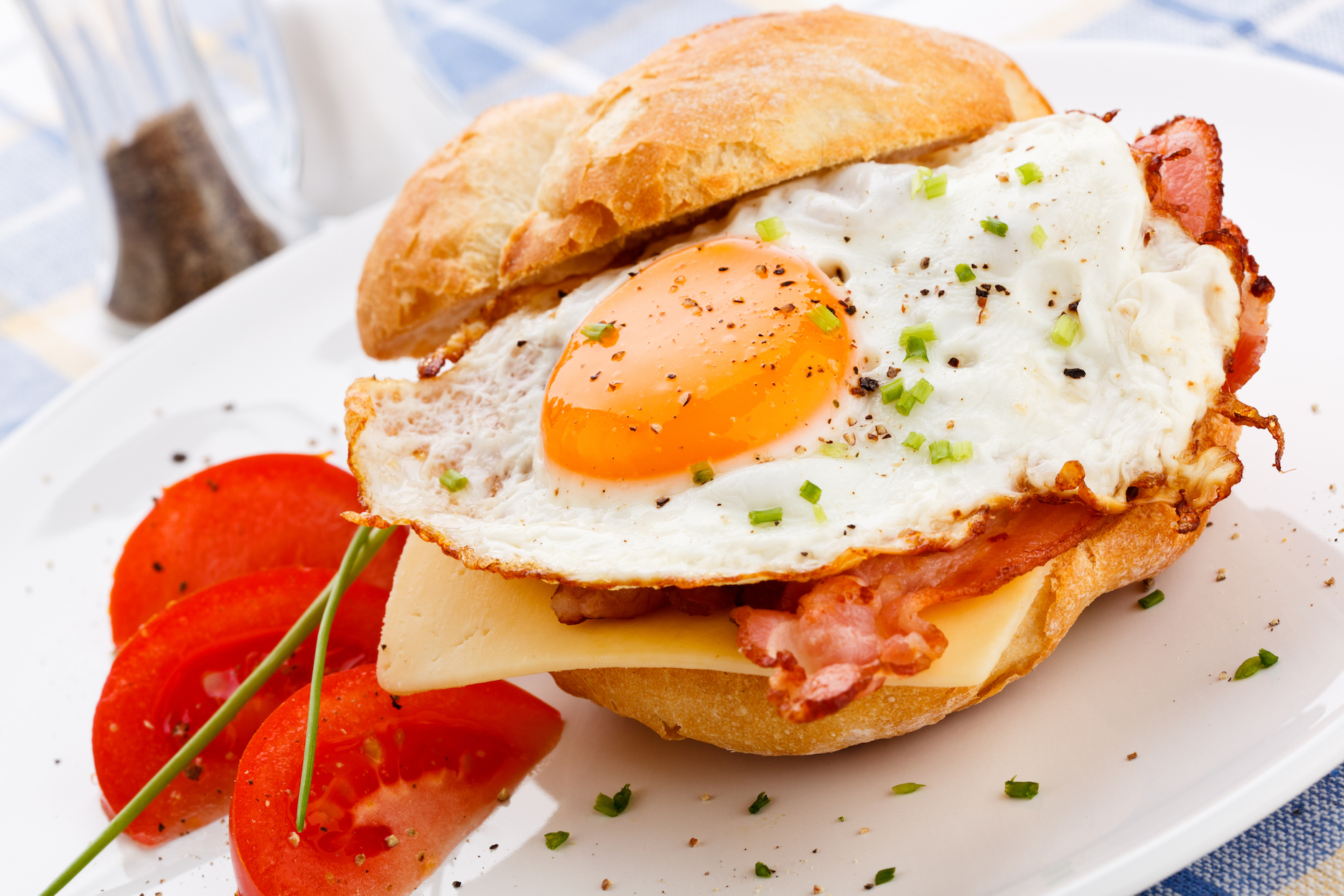
GOLDEN DINER
123 Madison Street
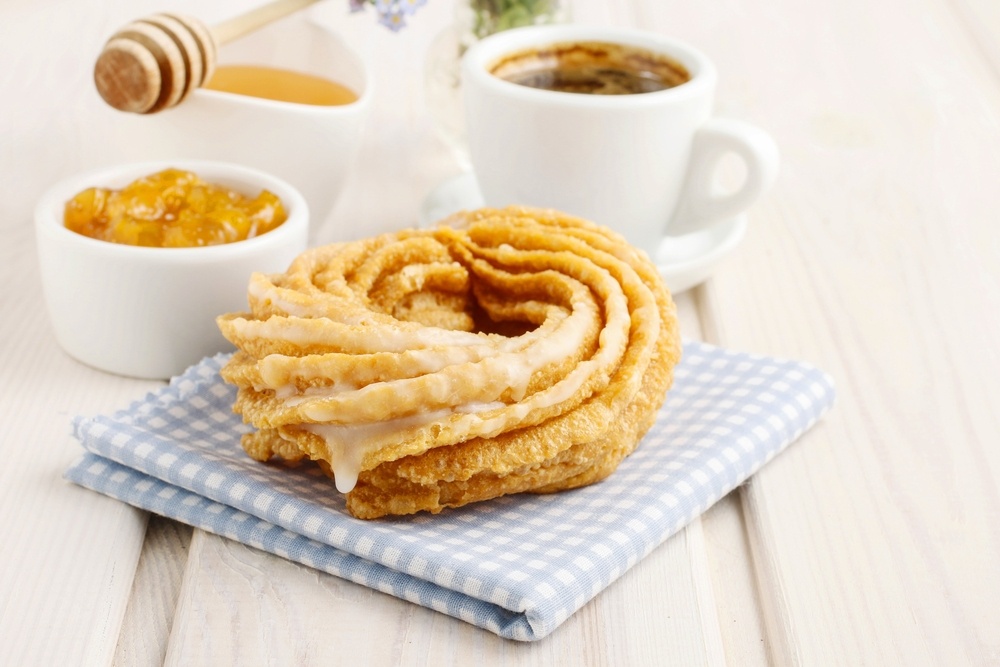
MEI LAI WAH
64 Bayard Street
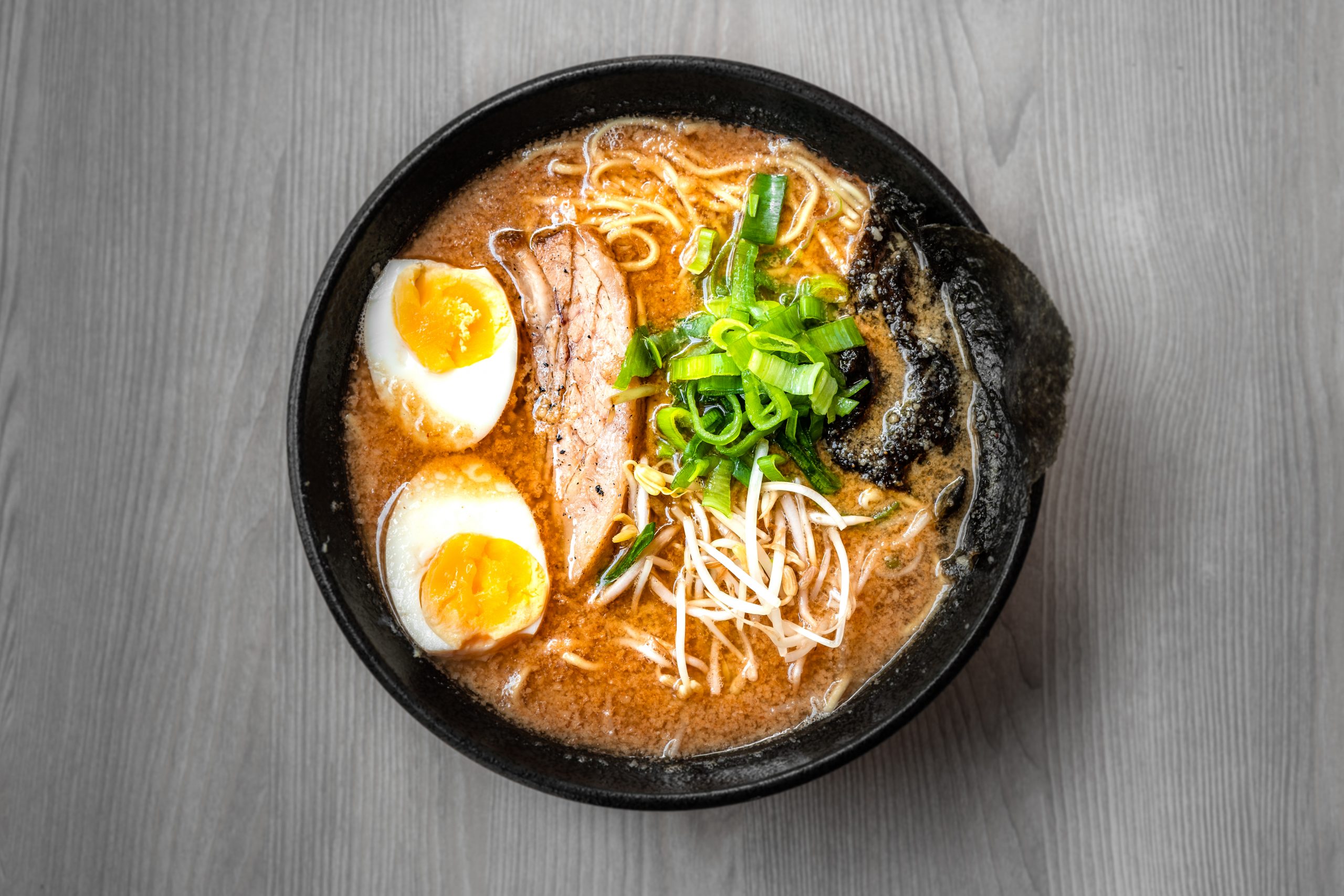
TASTY HAND-PULLED NOODLES
1 Doyers Street
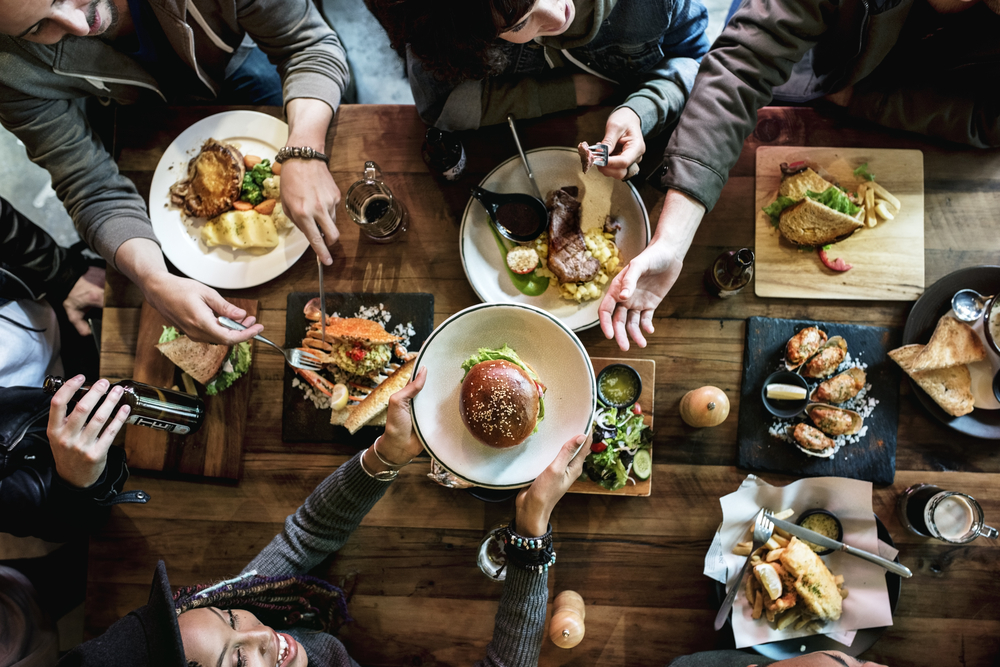
KOPITIAM
151 East Broadway
All Notable New Yorker photos courtesy of Wikipedia via Wikimedia Commons. Photo of Norman Reedus by Gage Skidmore 4; Photo of Chino Rodriguez by Chino Rodriguez, Public domain.

